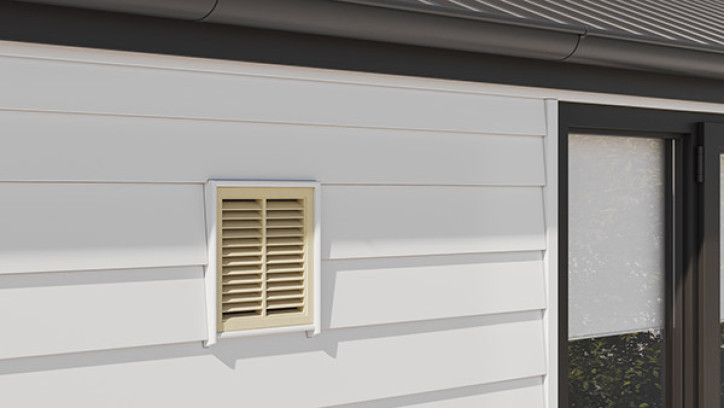1.3 Penetrations

Making a penetration up to 300 mm through internal or external building components usually doesn't require a building consent.
This exemption allows you to make penetrations of a limited size (with a maximum diameter of 300 mm) through both internal and external building components without needing a building consent. It also covers any building work associated with such penetrations such as weatherproofing, fireproofing, or sealing.
These small penetrations are typically necessary to install items such as heat pumps, home ventilation systems, extractor fans and a wide range of other building services which require wiring, pipes and the like to pass through a building.
The exemption contains conditions for two categories of building:
- An existing dwelling or outbuilding, provided:
- the dwelling is in a building that is not more than 3 storeys or the dwelling is detached
- the outbuilding is detached and is not more than 3 storeys.
- Any building other than a dwelling or outbuilding provided the penetration:
- does not modify or affect the primary structure of the building (which is all the structural elements of the building that are intended to contribute to resisting vertical and horizontal loads)
- does not modify or affect any specified system.
It is important to seek professional advice and to ensure the person carrying out the work is competent to do so, and understands the Building Code requirements in relation to the building's structural performance, weatherproofing and fire-rating. Non-compliant building work may affect any insurance cover on the building, as well as any future sale and purchase agreements.
What is exempt
- Installing a heat pump into a detached dwelling via a 100 mm diameter wall penetration through an external load-bearing wall.
- Installing an extractor fan above a kitchen hob in a 4 storey detached dwelling. The fan is vented through the roof with a 200 mm diameter duct.
- An owner has a single level apartment on the first floor of a 3 storey mixed-use building with retail spaces on the ground floor. The apartment owner intends to install an extract fan in a bathroom and vent it via a 290 mm diameter duct which penetrates an external firewall containing a bracing element.
- Installing a closed-circuit television surveillance system with several 50 mm diameter penetrations through a load-bearing external wall of an outbuilding.
- Fitting a security alarm box and associated cabling to an industrial building's external envelope which requires a 20 mm diameter penetration to be drilled and sealed in a non-structural masonry wall.
What needs consent
- An extract fan in a commercial kitchen is vented via a 250 mm diameter duct which penetrates a primary structure beam on the external wall. Although the penetration is less than 300 mm in diameter, as the penetration affects the primary structure of a commercial building it will require a building consent.
- Providing a 400 mm x 400 mm roof penetration between the trusses of a commercial building to provide for a natural ventilation duct to a staff changing area. As the penetration dimensions are greater than 300 mm in diameter, a building consent is required.
What the law says
14. Penetrations
1. Building work in connection with the making of a penetration not exceeding 300 millimetres in diameter to enable the passage of pipes, cables, ducts, wires, hoses, and the like through any existing dwelling or outbuilding and any associated building work, such as weatherproofing, fireproofing, or sealing, provided that:
(a). in the case of a dwelling, the dwelling is detached or in a building that is not more than 3 storeys; and
(b). in the case of an outbuilding, the outbuilding is detached and is notmore than 3 storeys.
2. In the case of an existing building to which subclause (1) does not apply, building work in connection with the making of a penetration not exceeding 300 millimetres in diameter to enable the passage of pipes, cables, ducts, wires, hoses, and the like through the building and any associated building work, such as weatherproofing, fireproofing, or sealing, provided that the penetration:
(a). does not modify or affect the primary structure of the building; and
(b). does not modify or affect any specified system.